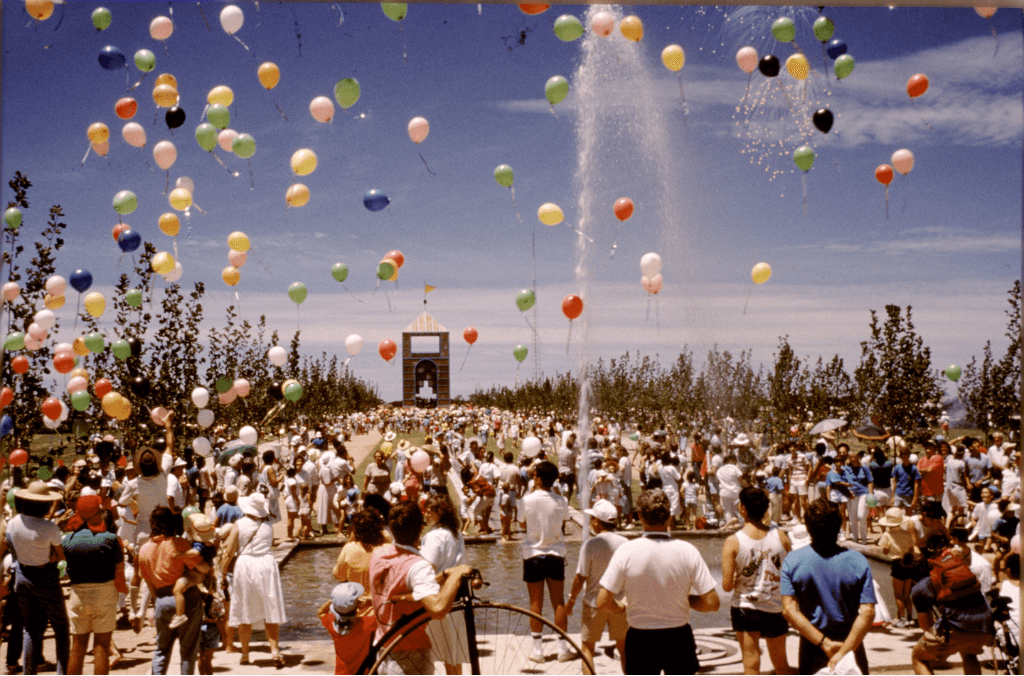The highlights – 2024 Spring Bird Census
The Spring Bird Census has been held annually since 2004 with the help of dedicated volunteers.
What is the Spring Bird Census?
The Spring Bird Census has been held annually at Sydney Olympic Park since 2004 with the help of dedicated volunteers from the Cumberland Bird Observers’ Club. It consists of 8 morning surveys over an eight-week period, covering 44 sites across the Parklands.
Spring Bird Census 2024 was the 21st year of this long-term monitoring program!
Why do an annual Spring Bird Census?
This program has allowed long-term monitoring of birds as part of our adaptive management framework, enabling us to:
- identify changes in bird populations that indicate a need for management intervention, and
- measure the success of any interventions implemented.
Not to mention it’s a great opportunity for volunteers to observe nature, improve bird knowledge, and spend time with like-minded people.

Meet Stephanie and David Harley – volunteers surveying birds along Haslams Creek Flats (rain, hail or shine).
How many species were recorded?
109 bird species were recorded this census.
With just over 220 bird species recorded at Sydney Olympic Park since 2000, seeing about half of this diversity over the course of 8 morning surveys is pretty exceptional.
How many birds were counted?
Over 18,000 birds were counted this census, averaging about 2, 250 birds counted per week. The site with the greatest abundance of birds this year was the Waterbird Refuge.
Why not visit and see how many birds can you count at the Waterbird Refuge?
What were the birds doing?
Apart from flying in/out, perching, feeding – what else do birds do in spring?
Raising the next generation of course!
Almost 30 species showed strong evidence of breeding within Sydney Olympic Park this year.
From Australian Brush-turkeys tending large mounds to Fairy Martins building bottle shaped nests out of mud pellets to Australasian Grebes maintaining their floating nests to Red-rumped Parrots using artificial nesting boxes at Archery Park - there’s a great diversity of birds breeding at Sydney Olympic Park.

A male Australian Brush-Turkey scrapping materials to build a nesting mound (c) David Blowers
Any stand outs?
Migratory shorebirds: Four species of migratory shorebirds were recorded during the Spring Bird Census 2024. Endangered Bar-tailed Godwits were recorded every week at the Waterbird Refuge, with a maximum of 71 individuals counted during a single morning survey. A Black-tailed Godwit was also recorded at the Waterbird Refuge, with this species not recorded under any surveys in the Park since 1997!

Migratory shorebirds such as the Bar-tailed Godwit are in decline, so important feeding/roosting habitat such as the Waterbird Refuge is essential in sustaining these amazing birds.
Local shorebirds: A maximum count of 133 Pied Stilts (formerly called Black-winged Stilts) were recorded in a single morning survey at the Waterbird Refuge, with this site remaining a regionally significant breeding habitat for this species. The Whiskered Tern was also recorded for the first time since 2017.
Raptors: Five raptor species were recorded during Spring Bird Census 2024. Species included the Black-shouldered Kite, Nankeen Kestrel, Swamp Harrier, Brown Goshawk and of course the resident nesting pair of White-bellied Sea-Eagle.
Waterbirds: A great diversity of waterbirds were recorded during the census; some less common species recorded were the Straw-necked Ibis at Newington Armory and Glossy Ibis at Eastern Pond, the former not recorded during the Spring Bird Census since 2013 and the latter not recorded under the program since 2016!
Crakes: The Baillon’s Crake, Spotted Crake, and Spotless Crake were recorded. These shy and secretive species are often hard to spot, but thankfully not for our experienced volunteers.
Woodland birds: Less common woodland bird species such as the Scarlet Honeyeater and Leaden Flycatcher were recorded in the Brickpit. And the Superb Fairy-wren was one of the 10 most abundance species this year across the Parklands. For one of the smallest birds on site, this species is sure holding its weight!

Superb Fairy-wren was one of the 10 most abundance species in the Park (c) David Blowers.
Want to join next year?
New volunteers are always welcome to join our partners from the Cumberland Bird Observers’ Club.

A major thank you to the dedicated volunteers of Spring Bird Census 2024!
You might also be interested in...


This week is Parks Week - a time of celebrating the incredible role parks and open space.


If you look closely, you may spot beautiful terrestrial orchids flowering at Sydney Olympic Park.


5 management actions carried out across the wetlands in the Park.